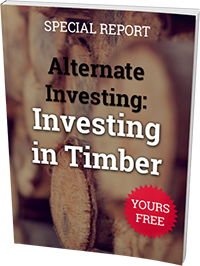Warren Buffett’s investment vehicle Berkshire Hathaway (BRK-B) is having a terrific year.
Berkshire Hathaway is up 17.69% year to date, compared with 6.21% for the S&P 500. And it is also trouncing U.S. small-cap stocks, which I still expect will outperform Berkshire over the next 10 years. I was so convinced of this that I bet $25,000 on it.
Yet, these impressive returns belie that several of Berkshire Hathaway’s higher-profile public investments have fallen out of bed recently.
And the “Oracle of Omaha” has endured several billion dollars in paper losses as a result.
Although the problems are specific to each company, there is an overarching and worrying trend. Moats or barriers to entry that seemed to be so secure only a few years ago don’t seem as wide as they once were.
Or even worse, competitors aren’t even bothering to try to cross them.
Buffett’s Three Recent Stumbles
Let’s take each of Buffett’s stumbles, one by one.
First, Buffett’s investment in Tesco (TSCO.L), the “Walmart of the U.K.,” has tumbled by over 50% in the past year, costing Berkshire about $700 million so far. In early October, Buffett publicly admitted he had made a “huge mistake” betting on Tesco. Berkshire has started to reduce its stake in the company even as Tesco is trading near an 11-year low.
Second, there is Buffett’s first foray into technology investing, International Business Machines Corporation (IBM). Buffett is a famous technophobe who often boasted that he doesn’t understand — and therefore would never invest in — technology companies. He broke his own rule in 2011, when he bought IBM. And he’s probably already kicking himself for doing so.
IBM recently reported falling sales for the 10th quarter in a row and a dip in profits. The shares sank by 7%, wiping another $1 billion off of the value of Buffett’s holdings, even as “Big Blue’s” stock is down 16.73% over the past three months. IBM also had to pay a chipmaker $1.5 billion to take its chip-making business off of its hands.
Third, even Buffett’s iconic investment, The Coca-Cola Company (KO), which he has held since 1988, is starting to fray at the edges. Coca Cola’s profit margins have tumbled in recent years. Its Q3 results revealed that global volume grew at just 1% year over year and revenue remained flat. Earnings per share dropped 13%, hit hard by currency movements. That bit of bad news cost Buffett another $1 billion.
With these losses adding up to a little over 1% of Berkshire’s market cap, Buffett’s baby is hardly on the ropes.
But it does suggest that some cracks are appearing in Buffett’s “buy and hold forever” investment philosophy.
Buffett’s ‘Moats’ Under Fire
Buffett’s tried-and-true strategy has been to buy great firms with long-term competitive advantages selling at reasonable prices.
Both Berkshire’s public and private investments focus on profitable companies with moats that boast a nearly invulnerable market position, sustainable profit margins and returns on invested capital, and superior earnings growth.
But as the recent stumbles in Tesco, IBM and Coca Cola show, even that strategy has a weakness. To extend Buffett’s metaphor, having a moat to protect your castle assumes that no other companies want to attack that castle and want what’s inside.
But that also presumes a level of stability that you can’t take for granted in today’s world. Many traditional industries are facing massive disruption. Every sector from oil (shale) to the taxi industry (Uber) is experiencing transformations that are overturning long-established business models.
Sure, the companies’ “moats” may still be there. But it matters little if no one wants your stuff. Overnight, your moat can become your biggest handicap.
Buffett’s Disrupted Investments
Let’s take Buffett’s recent flops one by one.
First, Tesco’s big portfolio of out-of-town supermarkets is a huge barrier to entry for potential competitors. That is, until no one shops at those supermarkets anymore. When shoppers prefer to use the web for large shopping purchases and convenience stores for smaller purchases, the moat suddenly becomes an expensive legacy asset.
Second, IBM used to make its money selling hardware. Today, companies are shifting to centralized, online data services — cloud computing — rather than buying technology and data services from the likes of IBM to run their own networks. That calls for a fundamental reinvention of the company — and the very reason Buffett never invested in technology companies in the first place.
Third, Coke may have been “it” in the past. But as any trip to your local convenience store will confirm, Coke has a huge number of competitors. What’s worse, even if Coca Cola makes the best-selling traditional soft drinks in the world, it matters little if consumers aren’t buying soft drinks any more. Sure, Coca Cola can launch or acquire healthy drinks to augment its product line. But that’s a huge and risky move away from its core brand.
The disruptive changes in today’s business environment are putting pressures on traditional moats everywhere. Cable companies spent billions on getting content to households. And today, hundreds of thousands of consumers who, like me, have “cut the cable,” are happy with getting content delivered through Netflix or Apple iTunes.
Moats that were once keys to a company’s market share matter little if what they offer is disrupted by changes in technology or consumer tastes.
And addressing this overarching trend may become Berkshire’s biggest challenge in the years ahead.
Disclosure: I hold Berkshire personally.
In case you missed it, I encourage you to read my e-letter column from last week about why I expect the stock market to rally in Q4. I also invite you to comment in the space provided below.

![[Warren Buffett]](https://www.stockinvestor.com/wp-content/uploads/Warren_Buffett_KU_Visit-e1384532604413.jpg)


